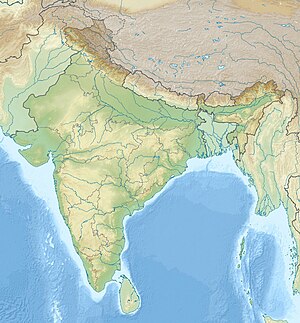Yavanarajya inscription
| Yavanarajya inscription | |
|---|---|
Ancient Sanskrit inscription Mathura GMM 88.150 | |
| Material | red sandstone |
| Size | 102 x 37 centimeters |
| Writing | Sanskrit, Brahmi script[1] |
| Created | 1st Century BCE |
| Discovered | 1988, in Maghera, a village outside Mathura 27°34′16″N 77°35′24″E / 27.571171°N 77.590097°E |
| Place | Mathura, Uttar Pradesh |
| Present location | Mathura Museum, India |
 Maghera (Mathura) | |
The Yavanarajya inscription, also called the Maghera Well Stone Inscription,[2] was discovered in the village of Maghera, 17 kilometers north of Mathura, India in 1988.[3] The Sanskrit inscription, carved on a block of red sandstone, is dated to the 1st century BCE, and is currently located at the Mathura Museum in Mathura.[3][4] The inscription notes the donation of a water well and tank to the community in 1st century BCE, built by a Brahmin.[5]
The inscription was published and analysed by French indologist Gérard Fussman in 1993.[6] The inscription is in Brahmi script, and is significant because it mentions that it was made in Year 116 of the Yavanarajya ("Kingdom of the Yavanas"), and proves the existence of a "Yavana era" in ancient India.[7] It may mean that Mathura was a part of a Yavana dominion, probably Indo-Greek, at the time the inscription was created.[3]
Inscription[]
The Yavanarajya inscription is in Brahmi script and describes a dedication for a well and a tank in Mathura on "The last day of year 116 of Yavana dominion (Brahmi script:
